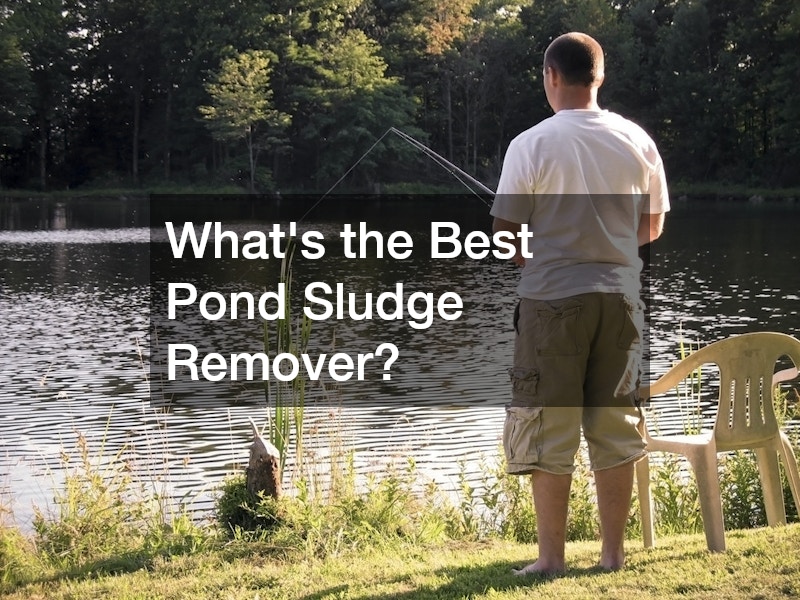
Introduction
Maintaining and enhancing farm land with a barn is essential for sustainable agriculture and increased productivity. With advancements in technology and evolving agricultural practices, there are numerous updates that can significantly benefit your farmland. From improving soil health to incorporating modern irrigation systems, these updates not only boost crop yields but also ensure long-term sustainability. This article delves into ten essential updates that every farmer should consider to optimize their land. Whether you are a seasoned farmer looking to modernize your practices or a new landowner aiming to maximize your investment, these updates offer practical solutions for various challenges faced in farming today.
First, we explore advancements in soil management, such as the use of cover crops and organic fertilizers, which are vital for maintaining soil fertility and structure. Next, we consider the benefits of precision agriculture technologies, including GPS-guided equipment and drones, which enhance efficiency and reduce waste. Upgrading irrigation systems to drip or pivot irrigation can drastically improve water use efficiency and reduce costs. Renewable energy installations, like solar panels and wind turbines, not only provide sustainable power but also reduce operational expenses.
Additionally, adopting modern pest control methods, such as integrated pest management (IPM), can help in reducing chemical usage while effectively managing pests. Livestock farmers can benefit from automated feeding and milking systems, which increase productivity and animal welfare. Enhancing farm infrastructure with better storage facilities and advanced machinery also plays a critical role in optimizing operations. Finally, considering agroforestry and diversification can lead to improved biodiversity and additional income streams. These ten updates, when implemented thoughtfully, can transform your farm land with a barn into a more productive, sustainable, and profitable enterprise.
1. Renovations

Updating the barn structure can help improve its overall appearance and functionality. By repairing the roof and walls, you can ensure that your barn is weatherproof and secure. Adding windows for ventilation can create a more comfortable environment for your livestock or storage items.
Upgrading the electrical systems in your barn can enhance safety and provide better lighting for your work areas. Installing new flooring can improve the durability and cleanliness of the space. Consider hiring fence builders for added security and to keep your farm animals safe.
When updating your barn, consider working with local natural stone supply businesses for a rustic and durable look. Utilizing stone for accents or retaining walls can add both functionality and aesthetic appeal to your property. Additionally, consider mulch and pavers for landscaping around the barn for a tidy and low-maintenance finish.
2. Modernization
Implementing smart technology in your barn can streamline operations and improve efficiency. Adding energy-efficient lighting can help reduce utility costs and minimize environmental impact. Installing automated feeding systems can ensure that your livestock receive the proper nutrition on a consistent schedule.
Utilizing GPS technology for farming can help you optimize crop yield and track equipment usage. Upgrading irrigation systems can help conserve water and ensure that your crops receive adequate moisture. Consider working with lawn irrigation companies for expert installation and maintenance of your irrigation systems.
When modernizing your barn, consider incorporating a pole barn design for a versatile and cost-effective structure. Pole barns are durable and customizable, making them a practical choice for agricultural use. Additionally, consider upgrading your lawn mower for efficient maintenance of your farm’s outdoor spaces.
3. Sustainability

Implementing renewable energy sources on your farm land can help reduce dependence on traditional power grids. Adopting organic farming practices can improve soil health and produce healthier crops. By creating wildlife habitats on the land, you can support local biodiversity and natural ecosystems.
Installing rainwater harvesting systems can help conserve water resources and reduce utility costs. Participating in conservation programs can provide financial incentives and support for sustainable farming practices. Consider working with tree removal companies to responsibly manage and utilize wood resources on your property.
When prioritizing sustainability on your farm, consider adding ponds for irrigation and livestock watering. Ponds can serve as a valuable water source and habitat for aquatic species. Additionally, explore fence install options to create boundaries for conservation areas and protect natural habitats.
Taking care of animals on farmland is a vital aspect of maintaining a successful and sustainable agricultural operation. Ensuring animal welfare involves providing adequate shelter, nutrition, and healthcare. Proper housing, such as barns or specialized pens, protects animals from harsh weather conditions and predators. Balanced diets tailored to each species’ needs, along with access to clean water, are crucial for their health and productivity.
Regular veterinary care, including vaccinations and check-ups, helps prevent diseases and manage health issues promptly. Implementing good hygiene practices in animal housing areas reduces the risk of infections and promotes a healthy living environment. Additionally, humane handling and stress reduction techniques improve overall animal well-being.
Rotational grazing and proper pasture management ensure that animals have access to fresh, nutrient-rich forage, promoting better health and soil conservation. By prioritizing animal care, farmers can ensure their livestock remains healthy, productive, and contributes positively to the farm’s success.
4. Expansion
Adding storage buildings to your farmland can provide additional space for equipment, tools, and supplies. Constructing a workshop can create a dedicated area for maintenance and repairs. Building additional livestock shelters can accommodate growing animal populations.
Expanding crop fields can increase your farm’s productivity and diversify your agricultural output. Creating a processing facility on-site can streamline food production and value-added processing. Consider partnering with local farmers for collaborative expansion projects.
When expanding your farm, consider working with reputable fence installers to secure your property and protect your assets. Proper fencing can prevent livestock from wandering and deter potential intruders. Additionally, explore options for adding storage sheds or structures for equipment and seasonal supplies.
5. Diversification

Exploring alternative crops can help mitigate risk and adapt to changing market demands. Starting agritourism activities can generate additional income and educate the public about farming practices. Establishing a farm-to-table operation can connect consumers directly with your products.
Implementing value-added products such as jams, honey, or crafts can increase the profitability of your farm. Offering educational workshops or tours can engage the community and build customer loyalty. Consider partnering with local markets or restaurants to expand your distribution channels.
When diversifying your farm, consider leveraging your existing resources and expertise to explore new ventures. Look for opportunities to collaborate with neighboring farms or businesses for mutual benefit. Additionally, consider upgrading your equipment or facilities to support new product lines and services.
6. Accessibility
Improving road access to your property can make transportation of goods and equipment more efficient. Adding parking spaces for visitors can accommodate farm tours and events. Creating designated pathways for equipment can reduce soil compaction and damage to crops.
Installing signage for easy navigation can help visitors and delivery drivers find their way around your farm. Ensuring ADA compliance for public areas can make your farm accessible to individuals with disabilities. Consider working with professional lawn care companies for regular maintenance of pathways and public areas.
When enhancing accessibility on your farm, consider creating designated areas for loading and unloading equipment. Implement safety measures such as mirrors or lighting to improve visibility around busy intersections or turns. Additionally, consider upgrading your farm’s entrance gate for added security and ease of access.
7. Security

Installing surveillance cameras around your property can deter theft and vandalism. Adding motion sensor lights can illuminate dark areas and alert you to potential intruders. Implementing access control systems can restrict entry to designated areas.
Creating perimeter fencing can establish clear boundaries and prevent unauthorized access. Hiring a security guard for onsite monitoring can provide continuous surveillance and quick response to security incidents. Consider working with trusted fence builders to customize security fences that meet your specific needs.
When enhancing security on your farm, consider investing in alarm systems for your barn and other outbuildings. Displaying security signs can deter criminal activity and signal that your property is protected. Additionally, consider implementing procedures for livestock identification and inventory to prevent theft or livestock smuggling.
8. Water Management
Creating drainage systems on your farm land with a barn can prevent erosion and flooding. Installing water storage tanks can capture and store rainwater for irrigation and livestock watering. Implementing a drip irrigation system can deliver water directly to crops for efficient water usage.
Digging wells for water supply can provide a reliable source of water for your farm operations. Adding ponds for irrigation and livestock watering can supplement your water resources and support aquatic habitats. Consider working with reputable pond contractors for expert design and construction of farm ponds.
When managing water resources on your farm, consider implementing rain gardens or bioswales to capture stormwater runoff and filter pollutants. Establishing riparian buffers along waterways can help protect water quality and provide habitat for wildlife. Additionally, consider consulting with soil conservation specialists for guidance on sustainable water management practices.
9. Financial Planning
Developing a budget for updates to your farm land with a barn can help prioritize essential projects and allocate resources effectively. Researching available grants and loans can provide financial assistance for improvements and expansions. Consulting with financial advisors can help you make informed decisions about investments and financing options.
Exploring tax incentives for agricultural properties can help reduce tax burdens and maximize deductions. Creating a long-term financial plan for your farm can help guide strategic decision-making and ensure financial stability. Consider working with farm business management experts for tailored financial advice and support.
When planning for the financial future of your farm, consider conducting a cost-benefit analysis for major investments or projects. Look for opportunities to optimize cash flow and reduce operating expenses. Additionally, consider diversifying your revenue streams to build resilience and adapt to market fluctuations.
10. Future Growth
Conducting a market analysis can help you identify emerging trends and opportunities for growth. Formulating a growth strategy can outline short-term and long-term goals for your farm business. Networking with other farmers for collaboration can create mutually beneficial partnerships and support networks.
Expanding product lines and services can help you reach new markets and attract diverse customer segments. Considering succession planning for the farm can ensure a smooth transition of ownership and operations. Look for opportunities to mentor future generations and cultivate leadership skills within your farm team.
When planning for the future growth of your farm, consider participating in industry conferences or trade shows to stay informed about market trends and best practices. Seek feedback from customers and stakeholders to identify areas for improvement and innovation. Additionally, consider investing in professional development for yourself and your team to stay competitive and adaptable in a rapidly changing agricultural landscape.
Conclusion
In conclusion, updating your farm land with a barn is not merely about adopting the latest technology; it’s about making informed decisions that enhance productivity, sustainability, and profitability. Each of the ten updates discussed in this article offers unique benefits tailored to different aspects of farming. From improving soil health and upgrading irrigation systems to incorporating renewable energy and modern pest control methods, these updates can revolutionize the way you manage your land.
For those with a land with a barn, these updates hold even greater potential. A barn is more than just a storage space; it can be the hub of your farming operations. By integrating modern technology and infrastructure improvements, your barn can support advanced machinery, house renewable energy systems, and even serve as a central point for precision agriculture operations. Furthermore, barns can be optimized to enhance livestock management with automated feeding and milking systems, improving animal welfare and productivity.
Adopting agroforestry and diversification strategies can also provide additional income streams and enhance biodiversity on your farm. These practices not only contribute to the ecological balance but also open up new opportunities for revenue. Updating your farm land with a barn with these practices ensures that your operations are not only profitable but also environmentally responsible.
As you consider these ten updates, think about the specific needs of your land with a barn. Tailor these improvements to suit your unique circumstances, and you’ll find that your farml land with a barn becomes more resilient, efficient, and sustainable. Embracing these changes will position you well for the future, ensuring that your farming operations thrive for generations to come.




